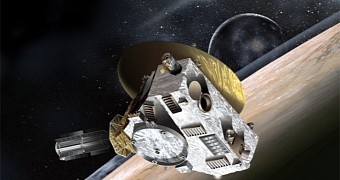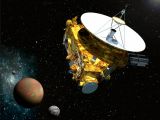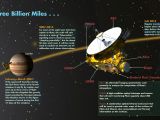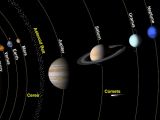This past Saturday, December 6, NASA's Pluto-bound New Horizons spacecraft woke up from a years-long nap. The spacecraft is now en route to Pluto and is estimated to be some 3 billion miles (4.8 billion kilometers) away from Earth.
As detailed by NASA scientists, New Horizons left our planet on January 19, 2006. It was launched from a space station in Florida, US, and is expected to begin studying Pluto sometime in January 2015.
What this means is that the New Horizons spacecraft, whose overall weight is one of 478 kilograms (1,054 pounds), will soon become the first probe ever to study the Pluto system up close. Thus, in July 2015, the spacecraft is set to make its closest approach to the distant body.
New Horizons was asleep for the better part of its journey
Information shared with the public says that, since it was launched from Cape Canaveral, Florida, in January 2006, until this past Saturday, New Horizons spent a total of 1,873 days in hibernation. Otherwise put, it was asleep about two thirds of its adventure through space.
Like other spacecraft before it, New Horizons was put into hibernation mode for the better part of its mission to limit its use of electrical power and to cut down on the resources required to keep tabs on it and its activity.
“Not only has hibernation reduced wear and tear on the spacecraft's electronics, it also lowered operations costs and freed up NASA Deep Space Network tracking and communication resources for other missions,” scientists say.
Mind you, New Horizons didn't exactly nap for 1,873 days straight. On the contrary, the spacecraft was made to send a message to Earth each and every week of its journey, and once every few months, it was woken up to make sure that it was still alive and kicking.
Awaking the spacecraft from hibernation
After being awoken from its slumber this December 6, the probe beamed yet another message to Earth. This message took nearly four and a half hours to reach our planet and provided confirmation that the spacecraft was no longer in hibernation mode.
Scientists with NASA say that New Horizons now finds itself at a distance of about 162 million miles (roughly 260 million kilometers) from the Pluto system. When compared to the distance separating it from our planet, this seems pretty darn close.
Over the following few weeks, researchers will get to work testing the spacecraft’s systems and instruments. The goal is to make sure that New Horizons will be well capable of studying the anatomy and behavior of the Pluto system come January 2015.
“The New Horizons team will spend the next several weeks checking out the spacecraft, making sure its systems and science instruments are operating properly. They’ll also continue to build and test the computer-command sequences that will guide New Horizons through its flight to and reconnaissance of the Pluto system,” NASA explains.
The details of New Horizons' Pluto mission
Having reached the Pluto system, New Horizons will study not just this distant celestial body but also its moons and one or two objects in the Kuiper belt, which extends outside the planets in the Solar System and packs thousands of bodies chiefly made up of frozen methane, ammonia and water.
The spacecraft will research the Pluto system with the help of seven scientific instruments, i.e. a high-resolution telescopic camera, a space dust detector, a multicolor camera, infrared and ultraviolet spectrometers, and two particle spectrometers.

 14 DAY TRIAL //
14 DAY TRIAL // 



